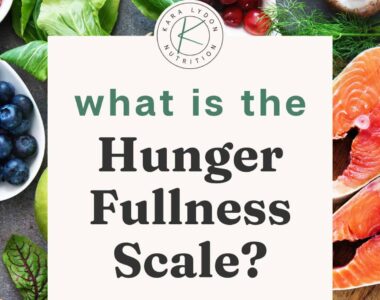
If you struggle with stubborn, hormonal acne, you might already know about the supposed link between cystic breakouts and certain foods. One theory is that high-glycemic foods, such as sweets and white bread, can trigger hormonal breakouts by fueling the body’s inflammatory response (after all, acne is an inflammatory condition). Another theory is that dairy can trigger cystic acne. I’ve treated so many clients for persistent hormonal breakouts in my 30 years as an esthetician, and questions about dairy and breakouts have come up again and again. The answer isn’t so simple—not all dairy is created equal, and research on the topic is a little sparse.
In this post, I’ll explain the link between dairy and cystic acne. I’ll also provide a game plan for what to do if you suspect dairy could be making your breakouts worse.
Why Hormonal Breakouts, and Why the Chin and Jawline Area?
When we talk about the possible link between dairy and breakouts, we’re specifically talking about hormonal (cystic) breakouts. Cystic blemishes are those hard, often painful, bumps that never come to a head. They just sit there and can seemingly take forever to go away.
It’s incredibly common to get hormonal breakouts on the chin and around the jawline. Hormones trigger oil glands, of which there are many located in these areas. Since hormones are fat soluble, the body will use these glands as an avenue of excretion for fat-based hormones.
What is the Link Between Dairy and Hormonal Breakouts?
Experts hypothesize that, since the majority of milk comes from pregnant cows (and some cows in the U.S. are given additional growth hormones), the hormone levels in milk may play a role in excess sebum production, which promotes acne. In other words, the consumption of certain dairy products may influence the hormones that trigger oil production in the skin to ignite the breakout process.
It’s important to note that dairy is not the cause of hormonal breakouts. A combination of internal factors ultimately causes them. You’re either predisposed to acne, or you’re not. That said, external factors (like dairy) can definitely be triggers that make breakouts worse and more difficult to manage.
Got (Skim) Milk? Not All Dairy Products Are Created Equal
If you’ve been reading all this thinking, “Ugh, but I can’t give up cheese!” I get you—and I have some good news! Although research about the link between dairy and cystic breakouts is sparse, it shows that only specific types of dairy seem to have an impact, statistically speaking. Specifically, milk is what continues to get called out. Even more specifically, the strongest link seems to be between skim milk and breakouts. Low-fat dairy in general is thought to be more likely to trigger breakouts than full-fat dairy products. (Cheese lovers, rejoice.)
Now, this isn’t to say that it’s impossible for full-fat dairy products to stimulate breakout activity. As I said, the research is sparse, and a lot of what we know is anecdotal. This is why it’s really important to experiment for yourself to try to get a sense of what does or doesn’t work for your skin.
What to Do If You Suspect Dairy Is Triggering Cystic Breakouts
If you suspect dairy could be an acne trigger for you, try cutting it out of your diet completely for three weeks to see if there’s any improvement. If you tend to get cystic breakouts around your cycle, start cutting out dairy as soon as your period ends to see if it impacts the next one.
Once you’ve established a baseline, try slowly adding in different types of dairy. By adding them in one at a time, it will be easier to pinpoint if a certain type of dairy is more problematic for you than others. It can also give you a good sense of your personal tolerance. For instance, some people can consume certain amounts of dairy without it triggering their breakouts. Other people might be able to tolerate very little.
I know this process seems tedious, but if you’re dedicated to getting to the bottom of your hormonal breakouts, it’s worth it. Over 30 years as an esthetician has taught me that sometimes, anecdotal experience is the best. No two people are exactly alike. Research can be a good tool to guide you, but it’s so it’s important to test things out for yourself.
Speaking of which, here are my other tips for dealing with hormonal breakouts. One of them is to spot-treat blemishes without drying out the rest of your skin, which can make breakouts worse. One of my favorite ways to do this is with the Chin Breakout Treatment Kit.
Remember That the Cause of Breakouts Is Incredibly Hard to Pinpoint
Finally, I want to leave you with a reminder that it’s difficult to isolate a single cause or trigger for breakouts. Acne is incredibly complex, and while I hope this post gets you closer to banishing yours for good, dairy is likely only one piece of the puzzle. I’ve mentioned in this post how powerful anecdotal information can be—here are 11 common causes of adult acne as I’ve observed them in my time as an esthetician.
Celebrity Esthetician & Skincare Expert
As an esthetician trained in cosmetic chemistry, Renée Rouleau has spent 30 years researching skin, educating her audience, and building an award-winning line of products. Her hands-on experience as an esthetician and trusted skin care expert has created a real-world solution — products that are formulated for nine different types of skin so your face will get exactly what it needs to look and feel its best. Trusted by celebrities, editors, bloggers, and skincare obsessives around the globe, her vast real-world knowledge and constant research are why Marie Claire calls her “the most passionate skin practitioner we know.”



